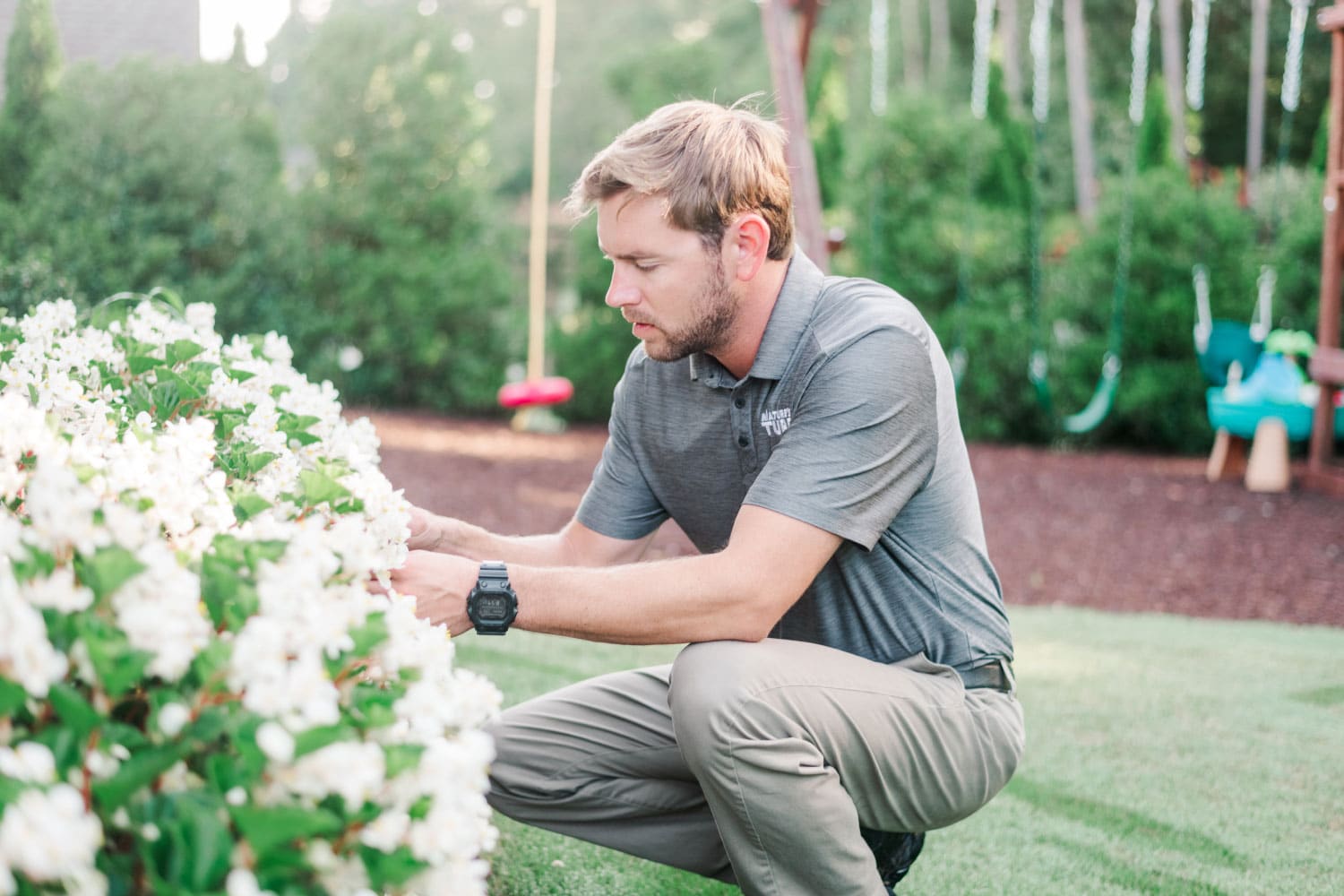Japanese beetles are one of the most commonly discussed pests in ornamental horticulture, the study of decorative plants. These beetles are visually unmistakable, and they can cause excessive damage to trees and shrubs when their populations spike. With a little knowledge of their life-cycle, strategic monitoring, and treatment, the damage done by Japanese beetles can be mitigated.
What Is a Japanese Beetle?
Japanese beetles are invasive beetles from Japan that were brought by accident to North America on plant materials. Despite being on opposite sides of the globe, the climates in Japan and much of North America are similar, enabling pests like this one to succeed and even thrive stateside.
The life-cycle and physical characteristics of Japanese beetles are consistent with all scarab beetles. Their larval forms are white grubs that are adventitious feeders. They aren’t incredibly mobile in the soil, so they will generally feed on the roots close to them. Appreciable root damage looks a lot like drought stress since the root hairs and feeder roots of a host plant no longer exist.
As adults, Japanese beetles have all the features of scarab beetles. Their green bodies and reflective elytra (the hardened forewings of beetles) are unmistakable. On each side, Japanese beetles have 6 small white tufts, differentiating them from other small beetles that are roughly a half inch in overall length. The damage they create is almost as unmistakable as they are. Starting with the youngest leaves, they eat the portions of leaves between the veins. If you look at a tree or shrub leaf, you can see and feel lines that look like branches. Those are the veins, and that is what remains when an adult Japanese beetle feeds.
How Do I Stop Japanese Beetles?
Traps designed for Japanese beetles exist, but they must be used strategically. Adult Japanese beetles are poor flyers, but they can travel long distances. Pheromones are used in the traps to attract the beetles, and the beetles get trapped because they’re generally clumsy. These traps are fantastic for scouting, but they should only be used in early spring, removed once Japanese beetles are identified, and never hung near sensitive plants like roses or crepe myrtles.
The pest management strategy for Japanese beetles starts with plant selection. Planting a landscape with many susceptible plants grouped together only increases the chances for large scale infestation in the event of a population spike. Start by selecting plants that are healthy and well-adapted to our climate, and place them strategically. From there, if the damage threshold has been exceeded, consider treatment strategies with insect control products.
Our premium tree and shrub program at Nature’s Turf starts the year with a systemic insect control product great for limiting damage from a number of pests, including Japanese beetles. This is a functional management strategy for grubs that feed on roots and adults that feed on leaves. The systemic nature of this product means that it’s present in both tissues and can limit both populations and damage significantly. Treating adults can be a bit challenging with contact control products since they can simply fly away, but both our basic and premium tree and shrub programs include short-duration surface control of grubs (the larval form of Japanese beetles) as well as the adults.
Important Takeaways:
- Japanese beetles are invasive beetles from Japan. Accidental introduction with plant materials brought here from Japan introduced this pest to North America.
- The life-cycle and physical characteristics of Japanese eetles are consistent with all scarab beetles. Their larval forms are white grubs that are adventitious feeders.
- As adults, their green bodies and reflective elytra are unmistakable. On each side, Japanese beetles have 6 small white tufts, differentiating them from other small beetles that are roughly a half inch in overall length.
- Traps are fantastic for scouting, but they should only be used in early spring, removed once Japanese beetles are identified, and never hung near sensitive plants like roses or crepe myrtles.
- The Nature’s Turf premium tree and shrub program starts the year with a systemic insect control product. This is a functional management strategy for the grubs that feed on the roots and the adults that feed on the leaves.
- Treating adults can be a bit challenging with contact controls since they can simply fly away, but both our basic and premium tree and shrub programs include short-duration surface control of grubs (the larval form of Japanese beetles) as well as the adults.
- Are you concerned about Japanese beetles in your landscape? We have the knowledge and experience to help you control and even eliminate these pests. Give us a call at (770) 884-1546 or email us at info@naturesturf.com. We have a staff of pest professionals eager to make your acquaintance and help strategize ways to rid your property of Japanese beetles–or other pests that are causing damage to your landscape or home.








